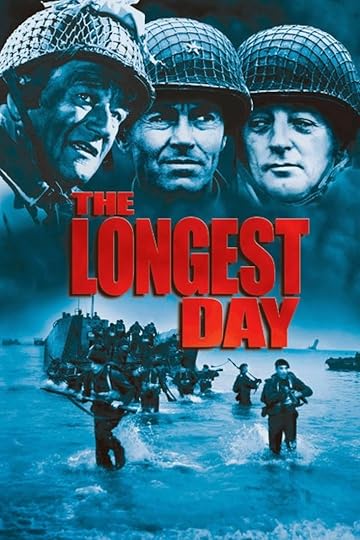The Ghost Army Saves the Day

All the pomp and circumstance surrounding the seventieth anniversary of D-Day reminds me of how hard the movies have tried to capture the events of June 6, 1944. On this pivotal date, Allied troops landed on the beaches of Normandy, France, paying a huge price in human lives but also turning the tide of World War II. The Longest Day, from 1962, was an international spectacular starring every Hollywood bigwig from John Wayne to Robert Ryan to Henry Fonda to Robert Mitchum. Sean Connery appeared as a lowly private, just before winning fame for his breakout role as James Bond. France’s Arletty and Jean-Louis Barrault took part, as did Britain’s Richard Burton, Frank Finlay, and Peter Lawford. The big cast also found room for teen heartthrobs Sal Mineo, Paul Anka, and Tommy Sands. And famed novelists Romain Gary and James Jones were among those contributing to Cornelius Ryan’s screenplay, based on his bestselling non-fiction book.
Cut to 1998, when Steven Spielberg used the Normandy landings as a jumping-off place for his story of a soldier gone missing, Saving Private Ryan. Spielberg’s film was beaten out as Best Picture by Shakespeare in Love, in a year when two other war-related movies (Life is Beautiful and The Thin Red Line) were also in the running. Though I have some gripes about Saving Private Ryan, few will deny the power of Spielberg’s harrowing staging of the Normandy segment, as captured by Janusz Kaminski’s Oscar-winning camerawork.
I salute, of course, the brave men and women who helped make D-Day a success. But there’s one aspect of that invasion I didn’t learn about in my high school and college history texts. In fact, it remained secret until 1996. I’m talking about the Ghost Army.
I first heard of the Ghost Army from Jack Masey. When I served as a guide at Osaka’a Expo 70, Jack was the honcho leading the U.S. Pavilion’s design team. I didn’t get to know Jack well then, but many years later—as we planned for a 2010 reunion—I had the pleasure of learning more about him. When he explained his service in World War II, I couldn’t quite follow. He was a designer and builder of fake military equipment? Come again?
Now, thanks to a documentary by Rick Beyer that was broadcast by PBS in 2013, I have a better sense of what Jack was up to. At age 18, a recent graduate of New York’s High School of Music and Art, Jack was drafted, soon landing in the 23rd Headquarters Special Troops unit. As he recalled on camera, “We were told we were going to be using inflatable equipment to try and fool the Germans into thinking that we were a real army, when we were in effect, I suppose, a rubber army.”
The 23rd came ashore on D-Day with lightweight phony tanks, trucks, and aircraft that, when combined with sound effects recordings, gave the appearance of a major military presence. Members of the unit, who included young painter Ellsworth Kelly and future fashion designer Bill Blass, proved adept at deception, even hanging out at local cafes to spin stories designed to fool lurking Nazi spies. In a recent Memorial Day address, documentarian Rick Beyer paid tribute to these men: “They did not employ the steel of the bayonet, or the power of artillery, but instead wielded imagination, bravado, and creativity. They staged twenty-one different battlefield deceptions to keep the Germans guessing about the real strength and location of American forces.” How wonderful to know that artists too could use their skills to help save the world.
Published on June 10, 2014 11:39
No comments have been added yet.
Beverly in Movieland
I write twice weekly, covering topics relating to movies, moviemaking, and growing up Hollywood-adjacent. I believe that movies can change lives, and I'm always happy to hear from readers who'd like t
I write twice weekly, covering topics relating to movies, moviemaking, and growing up Hollywood-adjacent. I believe that movies can change lives, and I'm always happy to hear from readers who'd like to discuss that point.
...more
- Beverly Gray's profile
- 10 followers



